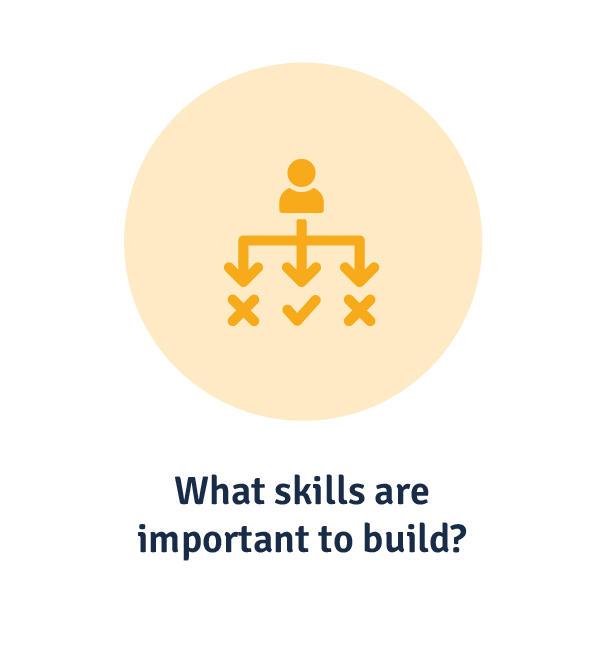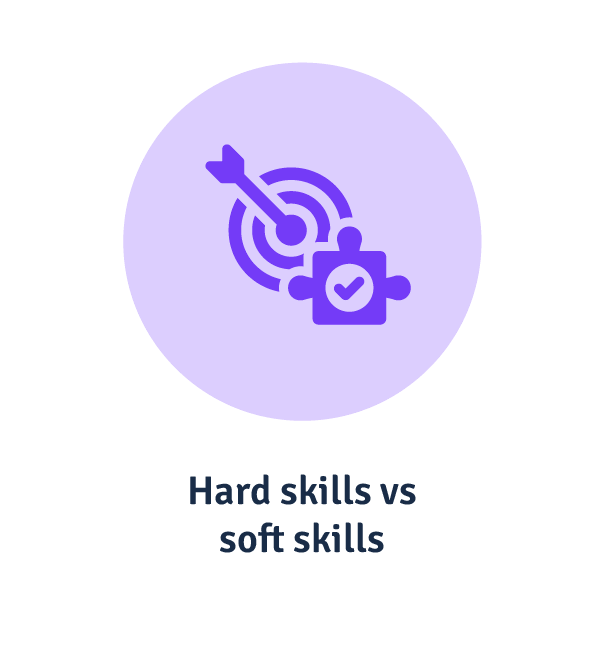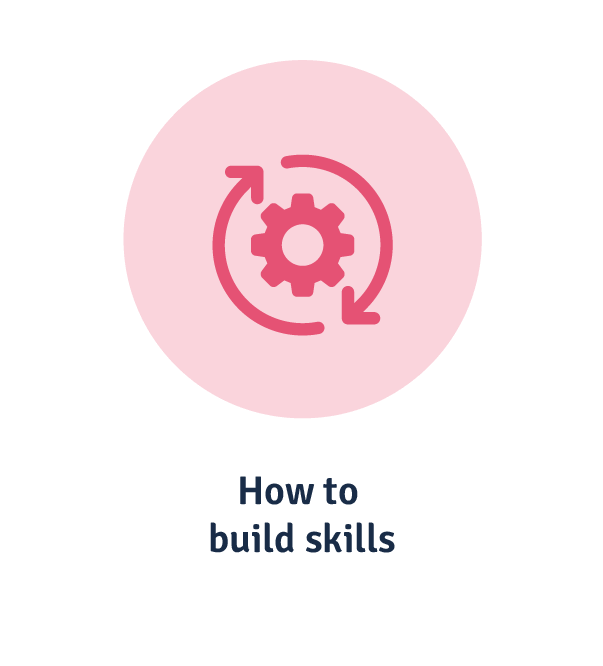LinkedIn calls talent a renewable resource. Developed, fostered, nurtured… however you look at it, skill building is what powers your future engine.
But the pace of change is accelerating, fast. Skills gaps are emerging at an even faster rate than ever. Roles are evolving. New fields are emerging. Empowering internal mobility comes down to helping employees develop new and crucial skills.
What’s the lowdown on skill building? Is any one skill more important to develop than another? Are there benefits to be gained from employee training? How can you provide opportunities to learn new skills? Let’s find out.
What skills are important to develop?
The skills that are important to develop are those that make up the crucial job roles in your organisation, existing or anticipated. Consider if a skill is consistently called out in performance reviews or sought-after during recruitment; this is likely what drives your service or product.
But let’s zoom out for a moment. You know that the collective skill of your workforce makes up your business structure and success. You also know that market and economic forces impact what skills are needed for business success, and therefore, business structure. After all, “skills gaps” isn’t a broad list of missing capabilities in all industries and businesses. The needs of a large corporate consulting firm in North Texas compared to a niche tide website reporting on the surf in New South Wales will be very different. Your skills gaps are determined by very specific environmental fluctuations.
It’s not a catch-all, though. Knowing what skills you need to develop is about knowing what skills are in demand amongst your workforce—because this creates desirable learning opportunities.
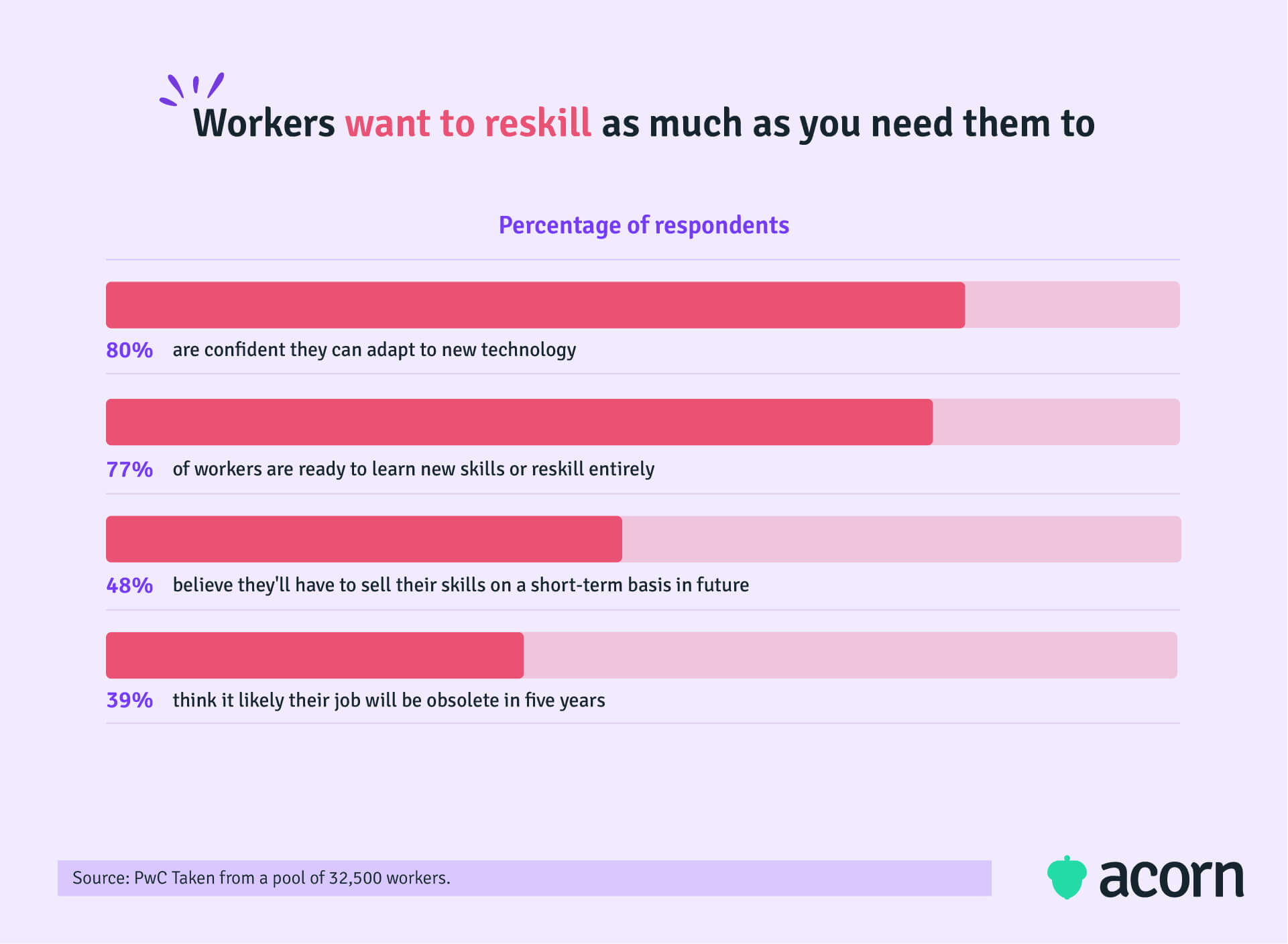
This is where we’ll diverge from the norm—of this article and the industry. The way forward sees skills as part of a greater collective, known as a capability. The right combination of skills, knowledge, behaviours, tools, and processes in the right role at the right time makes for an organisational capability, designed specifically to accelerate employee performance.
We designed the performance learning management system (PLMS) specifically to synchronise L&D experiences with business performance. It’s the only solution that guides learners to master the capabilities (remember, comprising skills) of their roles that will supercharge organisational performance. Acorn PLMS also enables you to codify and operationalise those capabilities, creating a loop of learning and performance that’s constantly feeding itself.
Okay, now back to the skills part of the capability equation.
Hard skills vs soft skills
Skills are often whittled down to two complementary categories: Hard and soft. Think of it like professional and personal development. At their barest bones, one set of skills keeps you technically literate while the other ensures you’re able to work with others. Both, however, are important to consider when developing employee skills.
What are hard skills?
The “hard” here refers to any skill that is teachable, quantifiable and measurable. These are often considered learned abilities, aka those that are repeatedly honed through practice and education. Think of any technical skill that sits high on a resume or job application; an in-house lawyer may be required to be proficient in contracts and business knowledge (or a VUCA mindset), at a minimum.
Most hard skills are role-specific (e.g., UI design), though there are increasingly more that are transferable across roles, like data analysis. More examples of hard skills include:
- Programming language
- Cybersecurity
- Bookkeeping
- SEO marketing
- Adobe Creative Suite
- Growth strategy.
What are soft skills?
Some people believe that rather than being a separate domain of skills, soft skills are the way you perform a hard skill. However, they’re more commonly known as people skills.
It’s not just communication skills. Teamwork, leadership, emotional intelligence and problem solving are all well-known soft skills. But you may be surprised to know the following are also considered soft skills:
- Stress management
- Productivity
- Work ethic
- Influence
- Observation
- Adaptability.
These all seem like fairly latent abilities, right? But each is a skill that enables harmonious work between co-workers. The Harvard Business Review found that those employees who fit well with their organisation were more satisfied, performed better and were more likely to stay with their company.
Consider soft skills for growth
Training for soft skills can help you more easily develop hard skills. Growth mindsets mean people are open to improvement—simply because they believe that they can learn anything to put their minds to. (Fixed mindsets, on the other hand, believe that traits and abilities are innate.)
How does that stack up in the workplace? Work ethic might be what pushes an individual to develop an information literacy skill that will benefit a project. Observation can help a graduate onboard more quickly, since they’re watching what seasoned employees do second nature. Critical thinking could be what enables a marketing associate to overhaul a content strategy for the better.
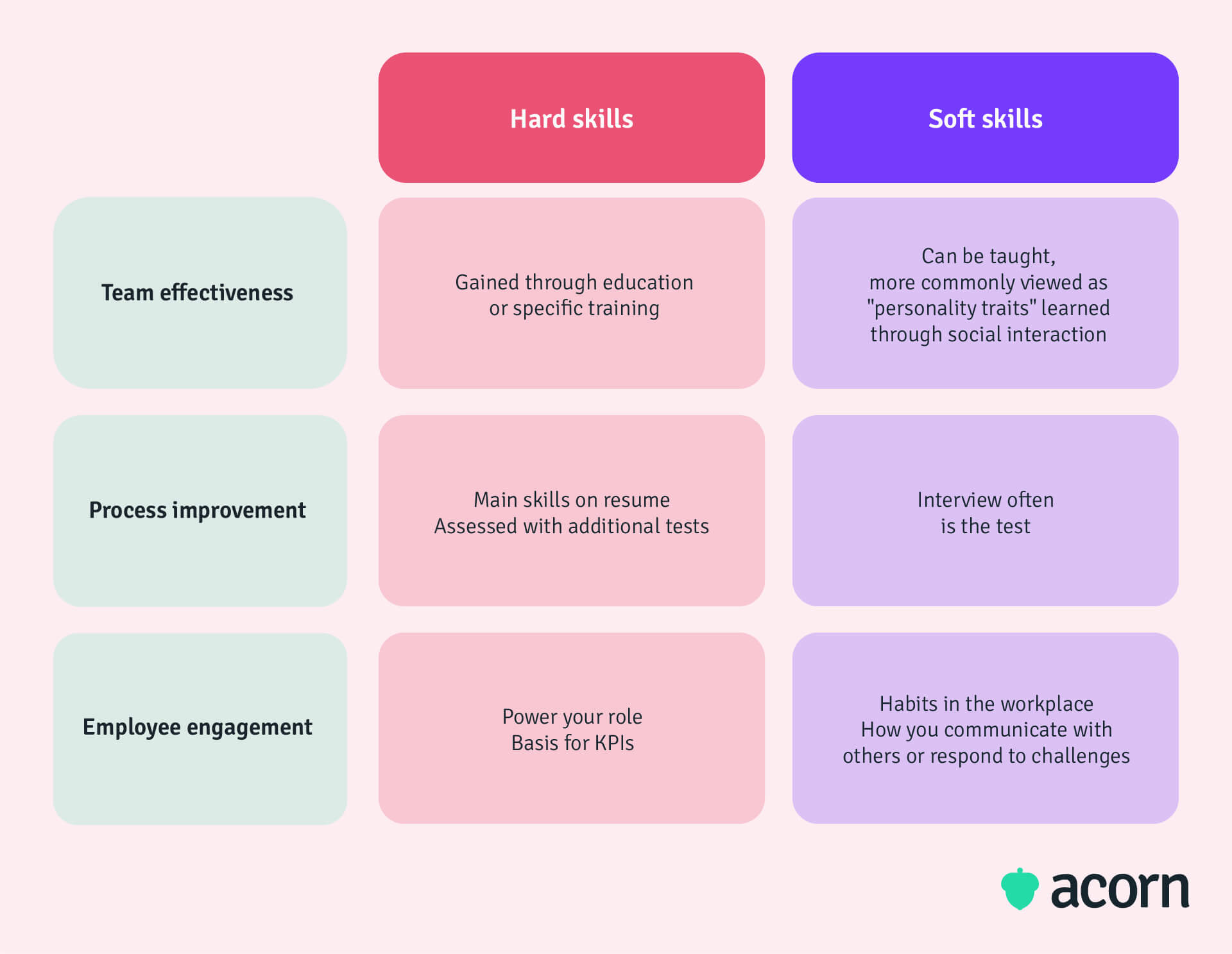
Why you need to invest in crucial skill training
Have you ever been at a party with a friend you’ve known for a while, and out of nowhere they show off a hidden skill you never knew they had? It’s the same in the workplace. Except instead of one of your younger employees being able to open a beer bottle with their teeth (save that for the weekends), it’s a beneficial ability that’s gone unnurtured—and therefore, so have its benefits.
Reason 1: Attract (and retain) high performers
High performers are a valuable commodity in the labour market. In a dramatic twist worthy of a soap opera, The Great Resignation means employees have the power. Remote work (and the Great Reopening, as it were foretold) has shifted the tide, and people want to be in jobs where they are valued and nurtured.
Winning in a competitive labour market also has a supplementary victory: Hanging onto the talented staff already in your organisation. Research shows the workforce is worried about job security. Don’t just take our word for it; according to PwC, 39% of people believe their role will be obsolete in five years. On the flip side, 77% are ready to learn new a skill or retrain entirely. There’s your window of opportunity to hang onto and help your people hone a new craft.
Reason 2: Match the pace of change
50% of all employees will need to be reskilled by 2025. If you’re thinking it’s thanks to technology, you’re on your way to bingo. Another part of the Great Skills Expiration (that one’s probably not going to catch on) is the economic disruption of the pandemic.
In fact, the very thing that is driving many skills to expiration can be used to harness new ones. Automation rarely means humans or their occupations are replaced. Rather, it’s a matter of a) streamlining inefficiencies and b) interacting with automation. And with respect to “non-professionals”, automation can be beneficial (think everyday items like the smartphone or robot vacuums).
Consider payroll. Automating pay didn’t eliminate the need for payroll officers, it simply evolved their responsibilities and required them to assimilate technology into their daily flow. Constantly looking for ways to upskill and reskill your employees ensures you’re not behind the eight ball when the tides change.
Reason 3: Widen your candidate pool
So, you’ve got A–G capabilities, as is common for your industry. The number one competitor has A–M, but that’s just because they have the ability to hire a lot of people who are skilled from H–M and you just don’t have the resources for that right now. Right? Not necessarily. It’s less about the art of shrewd recruiting (which has its place) and more about making capability development an internal art form.
Deloitte’s view is that workforce development should consider both the role and the potential of an individual to adapt, reskill and take on new responsibilities. That’s to say, give employees room to develop the skills and proficiency needed to navigate sudden and ongoing change. Allowing employees to study both what is interesting to them and what bolsters your company’s skill helps unlock your workforce’s potential.
Reason 4: Less micromanaging
Managers are important. They account for up to 70% of employee engagement scores, help connect employees to organisation objectives, and shape culture on the ground. So, there are two points here.
- Developing managerial skill means you can create the succession pipeline of your dreams.
- Developing IC capabilities means managers can do more strategising and less course correction.
Say you’ve got a Sales Team Manager who’s spending too much time literally looking over their graduate team’s shoulders to double check their language when talking to clients. Not only is this a waste of the manager’s time, but it sows the seeds that a young one’s skill is not up to scratch.
Rather than the manager possessing an entirely niche skillset, train those burgeoning IC employees to work autonomously and consistently level up. Remember that self-motivation is a soft skill, but one that keeps your workforce improving themselves.
Reason 5: Better, more agile performance
Many employees may not be equipped to go beyond their role description. Many don’t know how their specific role aligns with organisational objectives. Either way, they can’t be expected to go above and beyond, because they don’t know how. Reskilling helps employees practice capabilities that underpin internal mobility.
Agile employees can respond to nonstop change without great stress but with the same confidence and efficiency as always (give or take a few). That goes beyond responding to large-scale disruptions; highly skilled employees can make timely changes when day-to-day things just aren’t going to plan. It also means:
- They’re not relying solely on leaders to innovate for them, further lessening the burden on management; and
- There’s less stress on your systems and processes because flexibility is a core part of work.
Providing opportunities to learn new skills
A key element of the following strategies is that they all give power back to the learner. Instead of forcing employees to learn a new skill, giving them choice of study and engagement goes a long way to making those a new skill stick.
Personalised pathways
Personal motivation differs between people. (We’re all different, who woulda thought?) While the issue of teacher-to-student ratio is eased by virtual seminars and classes, there’s still the problem of engaging all your employees in crucial upskilling. That’s where personalised pathways come in.
Rather than a face-to-face class, using technology like a learning management system (LMS) enables pathways that map out the exact learning journey an individual personally needs to take. Two birds, one stone: You develop the skills your organisation is missing, and employees get to progress in their careers.
Learning in the flow of work
Pioneered by Josh Bersin, the idea of autonomous learning through social interaction, new challenges and self-directed study is well-studied. Think of it like a blended class of study. It gives employees control of what, when and how they learn, meaning they get real-time resolutions to real-life problems. There are no predetermined objectives to meet, nor are they specifications learners must subscribe to. Learning in the flow of work gives employees access to short burst content through which they can learn something, apply it, and then go back to work.
Mentoring
The master/apprentice relationship has a few benefits related to skill building.
- An internal mentoring program doesn’t require new resources; you can recruit internal experts to be mentors.
- Career development is fast-tracked thanks to clearer channels for mission-critical knowledge—a particular advantage for helping onboard new hires faster, too.
- Real-world context is given to formal L&D programs, such as through an LMS.
Remember that mentoring can also be between peers, in a group or even done virtually, to connect mentors and mentees across borders. This gives employees exposure to other cultures and perspectives.
Combine all three: Cross-team collaboration
Siloed teams work well for no one, least of all because mission-critical knowledge remains siloed. It also can create a “that’s not my responsibility” attitude. But encouraging teams to work more frequently together brings together complementary skillsets and enhances what’s learned in an online class. This gives employees the ability to experientially develop a new skill e.g., a marketing role better understanding customer problems by working more closely with an account manager.
Key takeaways
Skill building should be in your L&D vocabulary, but the process needn’t be bogged down by data. While you want to know the what and why of developing skills, it’s not necessary to wait until you have the picture completely mapped out.
Consider the skills that managers value most in teams, recruiters are seeking, and those that employees simply want to learn. Think about those abilities that also support the technical niches; adaptability and emotional intelligence are examples of soft skills that underpin your workforce’s skill in working efficiently, together and independently.
Retaining a talented, agile workforce and staying ahead of the industry curve can be done through easily implemented L&D techniques. Your employees want to be students again. Mentoring, ongoing courses and experiential learning all give them the ability to upskill every day, not just at certain points throughout the year.
Also worth mentioning again: Skills are only one part of the employee performance picture. Capabilities (an intentional combination of skills, knowledge, behaviours, tools, and processes) are what will really take your L&D strategies to the next level.
Related Reads on This Topic

Capabilities vs Skills: What Exactly Makes Them Different?
Skills refer to the capacity to perform a task, whilst capabilities allow outcomes to be generated. Discover more about their differences…

The Importance of Upskilling for Employee and Business Success
Upskilling is the process that will prepare your workforce for the future in the face of digital transformation…

Effective Strategies to Improve Transfer of Learning in the Workplace
Achieving tangible transfer of learning comes down to the strength of your training content, learning culture, and training evaluation…
